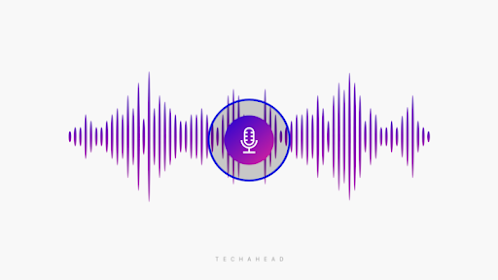Voice translation app development: An in-depth guide on scope, importance, and the development process
Whether it is making a business deal, buying or selling a product, navigating your way through a new city, or simply catching a cab, a language barrier can prove to be a significant hindrance.
This is why there is an increasing demand for voice translation technology, which can be a cure to this problem.
While it’s true that we have apps and services that can do the translation for you in a textual manner, most of them are laggy and produce an unsatisfactory experience. And that’s where the voice translation technology chimes in.
With a good voice translation app, two or more people can communicate with each other without having any prior knowledge of the different languages; the app does the translating for you!
Wait! Let us tell you all there is to know about a ‘Voice Translation App,’ including how it’s built to all its use cases.
How to build a voice translation app?
Voice Translation is a modern-day marvel of technology, a simple application that can facilitate speech translation in real-time by immediately translating your speech into the required language.
Voice Translation apps are built on three main components of technology- Automatic Speech Recognition, Machine Translation, and Voice Synthesis.
The Automatic Speech Recognition software or ASR recognizes your spoken words and transforms them into written text.
Following this, The Machine Translation software translates this written text into your chosen target language.
And finally, the machine-translated written text is spoken aloud in the target language by the Voice Synthesis module.
Currently, voice translation technology is still in the developmental stage. However, with the progress of machine learning algorithms and software, we are slowly making our way to developing extraordinarily accurate and authentic voice translation software.
Components involved in the making of a voice translation app?
When you want to make a voice translation app, you need to keep two components in mind- microservice and Client Apps. Let’s take a look at that.
Microservice — The power house where it all happens
The primary function of microservice is to translate from ‘Speech to Text,’ Cloud Translation, and ‘Text to Speech.
The microservice is integrated with the cloud to carry out the translation. It uses Cloud AI to find the most accurate translation for your speech.
The microservice is integral to the translation process as it receives the encoded audio and uses the ‘Speech to Text API’ to transcribe the message.
Client app — The one handling user side interactions
The second major component of a voice translation app is the Client App. The Client App or Client Component is the module of the application that is on the user side.
The client component of voice translation apps records and downloads all the translated messages from the Cloud storage.
Technologies used for developing a voice translation app
Now that you’re aware of the components involved let’s dive into all the technologies involved in making a voice translation app.
Machine Learning forms the heart of Artificial Intelligence responsible for voice translation. The main three components of Machine Learning are the input layer, hidden layer, and output layer.
The input layer is used for obtaining the information, the hidden layer is used for processing the data, and the output layer generates the final product or result.
Using Neural Machine Translation or NMT, the machine learning algorithm takes the entire input speech and generates the output.
The Neural Translation Machine acts like the human brain by gathering information (hearing), processing the data (thinking), and generating the response (speaking).
Steps to develop a voice translation app
To build a successful voice translation app, a certain number of steps need to be followed to ensure maximum success.
Researching the market
This step is often considered crucial when creating a new app. It is the first step when developing a new app or product.
It involves studying the market and designing surveys to gauge consumer requirements, market trends, potentials, predictions about market growth, and so on.
Analyzing the competition
While you’re conducting market research, your stakeholders will simultaneously conduct a competitor analysis.
This analysis will result in a list of popular competitors, user preferences, favorite features, target audience, and so on. This will allow you to gauge your target audience and their preferences, giving insight into what features to add to your apps.
Conceptualization
Following market research and competitor analysis, you will be able to finalize the final iteration of your product after several changes and added features.
Branding
Although this seems like a relatively simple step in the app development process, it is one of the most important. Creating a logo and name for your app that engages users and catches their attention is essential. The catchier the app name, the more users engage with it.
Real-time translation design
This step involves making your app as aesthetically pleasing and easy to use as possible. Your main priority is to capture the interest of your users. Therefore, the UI is a priority in this stage.
Building the USP
Add a unique or engaging feature to make your app stand out from the others on the market.
Securing against threats
You need to ensure that your app meets all the necessary security features so that your users do not face data leaks or attacks. Integrate cloud services and messaging technology in your app to ensure maximum security.
How to get your first voice translation app developed?
If you want to develop your quality voice translation app, look no more because TechAhead is here to do all that is required!
With over 13 years of experience in the field and over 250+ experienced developers worldwide, TechAhead is your one-way ticket to create the best application for your organization.
When you want to develop an app for your business, you need to choose one of the leading app development companies.
With an impressive portfolio of over 500 international companies, including Audi, AXA, and more, with over 700 brands, and 2000+ apps developed, we are the best option for all your application development needs.
Take a look at some of our case studies to highlight how we bring a positive change to those who contact us.
Source Article: https://www.techaheadcorp.com/blog/voice-translation-app-development/



Comments
Post a Comment